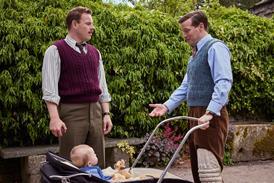The rise of the tapeless newsroom has been as inexorable as it has been inevitable. While other areas of the broadcast industry have been slower to adopt tapeless, the newsroom, with a firm eye on the multiplatform future and the demands of 24-hour coverage, decided to take the plunge.
With tapeless now established and broadcasters deploying second- and even third-generation systems, newsroom chiefs are realising that tapeless gives them much more flexibility in designing their workspace.
“The technology can be liberating,” says Sky News head of technology Steve Bennedik. “There is no longer the need to troop off to an edit suite to view and cut vision. We are reducing the number of islands and areas of isolation, thus speeding up the breaking news and production processes.”
Establishing land bridges between the islands and bringing separate, siloed operations into one coherent whole is the goal of the modern newsroom, and much effort is being made to get the right balance of who sits where and next to whom. “Verbal communications and line of sight are still as important as they ever were,” says ITV News managing editor Robin Elias.
Bennedik agrees. “That's why in the modern newsroom the hub works well,” he says. “The key decision-taker, and information distributors representing various platforms, are able to co-ordinate actions and reactions. At Sky News, functions such as the home and foreign desks, operations, the planning desk and the online news editor are positioned close together. We work in an open-plan environment where the production and studio functions blend.
Channel 4 News rejigged its layout last year. Its newsdesk is located at the centre of the operation, with spokes radiating out from it housing the separate teams (consumer, politics, foreign and so on). More specialist departments working on stories with longer lead times tend to be located further out.
“They don't need to be distracted or involved in the excitement of the upcoming programming,” explains Channel 4 News deputy editor Martin Fewell.
Then, on the periphery is craft editing and graphics. “The physical proximity between the two has done a lot for us as they tend to work closely together on projects,” he says.
Proximity is one of the primary drivers behind any newsroom organisation, with any spatial reorganisation seeking to mirror the workflow acrossa physical space.
For instance, one of the big changes recently made at the BBC has been the shift of the MediaPort (now Media-Wire, which centralises the recording operations and picture information from across BBC News into a single co-ordinated operation) from a location by the edit suites to a far more central position “a few steps” from the centre of things.
“We really noticed the effect of the MediaWire people not picking up the buzz of the newsroom nor the hunger for which pictures the journalists wanted,” says BBC head of newsroom development Simon Andrewes.
He adds that he might like to make it even more central, and indeed may well get a chance to do so when BBC News relocates to Broadcasting House in 2012.
Central hub
For the moment though, ITV News' recent 18-month refit to a hub model represents the apogee of newsroom design. The refit is far removed from ITV News' first-generation tapeless newsroom, “a place that people thought looked like a call centre”, says Elias.
Building on its experience of going tapeless at the regional level, ITV News' home, foreign and ITV London desks are all located in a central hub, with the programme desks wrapping round it in an arc. Journalists are grouped in specialisations and sit at desks that circle that area in turn.
“Previous newsrooms have had home and foreign desks separated, but the recent swine flu story is a good example that covers both of them,” says Elias. “Likewise, we've taken care to site the consumer affairs desks next to the business unit and so on - it's good for the exchange of ideas.”
Craft editing remains “slightly out of sight”. It is still important, even though the majority of the 130 desks in the newsroom boast some degree of editing capability. “Five years down the line, we will still have craft editors and graphic artists because they bring a quality that's invaluable,” says Elias.
In fact, despite misgivings in the early tapeless days that craft editing as a skill would die out, together with graphics it continues to be in demand and is one of the few newsroom functions that has resisted being folded in to the modern newsroom layout.
“We thought we might end up with editing in an open-plan room, but we've found that the craft people need somewhere to go where they can monitor video and audio carefully in a quieter environment,” says Andrewes.
In other words, while tapeless technology enables newsrooms to be designed differently, good newsroom design has to couple both the power of the newsroom systems with the way that people want and need to work.
As Sky's Bennedik says: “Technology must be the servant, not the master. A newsroom is run by people, not hardware and software, so it's important to recognise what people need in order to function.”
Tapeless technology
The tapeless newsroom has a complex architecture comprising three components: the Newsroom Computer System (NRCS), Automation and the Video Production System.
Avid's iNews and AP's ENPS are market leaders in the NRCS field, which includes Dalet and Octopus. They have evolved to meet growing demand for increasing functionality, including rough editing, metadata logging, captioning, rundown timing and collaborative workflows.
Automation essentially looks after the ingest of material and the playout at the other end, as well as archive and asset management. Key manufacturers include OmniBus and IBIS. Snell launched a system based on its Kahuna switcher at NAB.
Automation systems can also control a wide range of production gear, including robotic cameras, audio mixers, and lights.
Video Production Systems, such as Quantel's Enterprise sQ (used by BBC and Sky), Avid's newsroom solution (ITN) and Harris' NewsForce are capable of integrating fully with newsroom computer systems, automation, asset management and archive systems. They also encompass everything from ingest and playout servers to craft and journalist edit stations.
Sky News head of technology Steve Bennedik says: “We would like ways to blend production for broadcast, the web and other platforms. This last one will be key for the future - we need break-through, fusion technology.”

























No comments yet